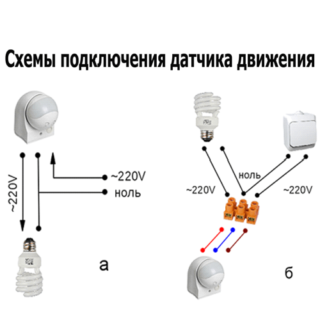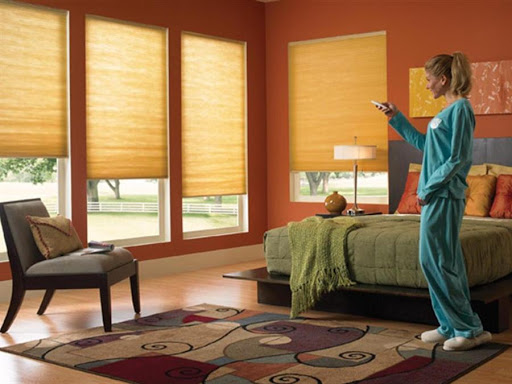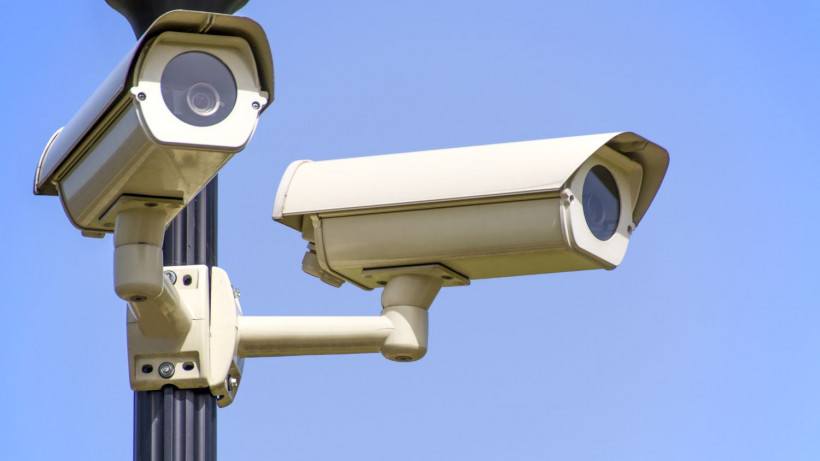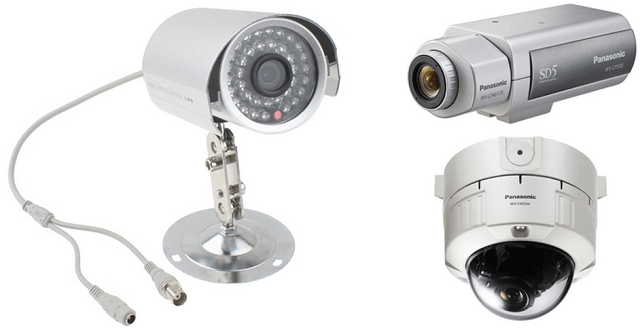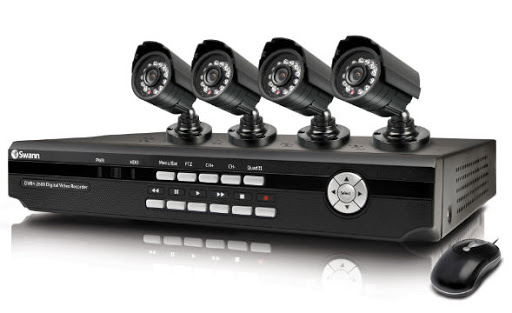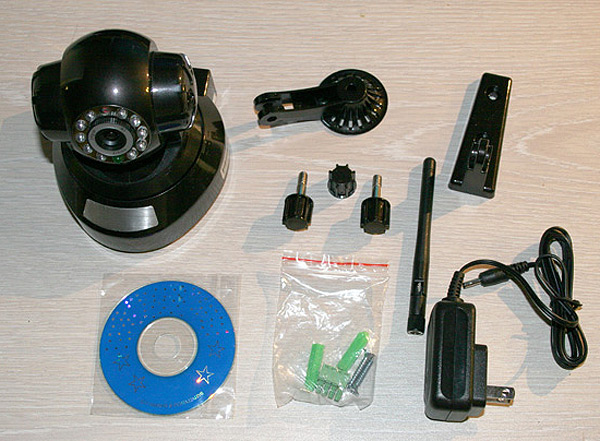A sensitive motion sensor for alarm is an indispensable element of security systems that protect territories from intrusion by unauthorized persons. To understand the features of its work, it is important to familiarize yourself with the existing varieties of these devices. You will also need to understand the features of the selection, installation and adjustment of sensitive elements.
Varieties of devices and their characteristics
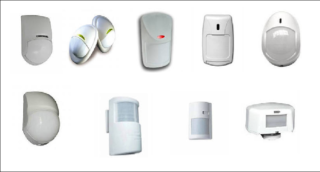
Depending on the principle of detecting a moving object, the known models of motion sensors are divided into the following classes:
- infrared;
- ultrasonic;
- microwave;
- combined.
The simplest and most affordable option for most is the use of infrared (IR) devices capable of perceiving changes in the thermal background in the controlled area. Ultrasonic sensors (US), emitting waves in the corresponding part of the spectrum, are the second most popular. They include a transmitter with a frequency generator and a receiver. The first emits waves inaccessible to human hearing, and the second receives a signal reflected from a moving object.
Microwave sensors are also widely used in security systems. Their action is based on the Doppler effect (shift of the wave frequency when reflected from a moving object). They contain a separate microwave generator and receiver. Advanced models of such sensors for security systems are supplied with a GSM-module, which allows the user to inform the user about activation over the air channel.
Combined devices combine the capabilities of various products, leveling the disadvantages of some types of sensors at the expense of the advantages of others. Most of the considered varieties in the way of communication with the control module can be wireless or wired.
Principle of operation
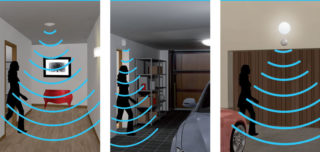
Modern motion sensors for the protection of premises and adjacent territories, regardless of their type, work on the principle of detecting moving objects along the path of the propagation of the emitted beam. If they are present, the sensitive element reacts to movement and generates a signal, which is then supplied to the actuator. The latter generates an impulse about a violation or triggers a mechanism that blocks the movement of a foreign object.
Motion detectors are classified into passive and active radiation detectors. The former react to any movement in the monitored sector due to the built-in optical system. Active sensors consist of two complementary devices, one of which generates and emits radiation, and the other receives it. An object in the coverage area changes the characteristics of the reflected beam, after which an alarm is generated in the receiver.
Features of choice
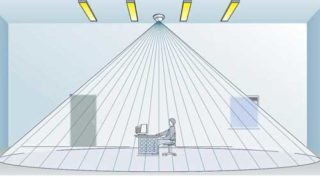
In order for the motion sensor to fully perform its protective functions, a competent approach to the selection of a suitable model is required. In this case, they are guided by the following technical characteristics and criteria:
- effective angle of capture of the controlled area;
- supply voltage and sensor sensitivity;
- minimum response time;
- for what purposes the device is supposed to be used;
- features of the installation site and climatic conditions;
- the degree of protection against moisture and dust.
Do not forget about the system configuration and the specifics of setting a specific model. The specificity of most of them is the ability to register movements only in the direct viewing area.
Installation and connection rules
The motion sensor is installed and connected, taking into account the manufacturer's recommendations.
Installation procedure:
- A switching scheme is selected that takes into account the operating conditions and characteristics of the room or protected area.
- They are determined with the location of the sensor, optimal in terms of its location and functionality.
- The machine on the switchboard, which is responsible for the line with the burglar alarm, turns off.
- The instrument wires are connected to the power and signal terminals.
- Power is supplied to the line and the system is checked for functionality.
In some models, the sensitivity of the built-in sensor is provided, which they switch to at the final stage of work. It is set in such a way that the sensor is triggered only when a person appears and does not react to flying birds and small animals.
Application area
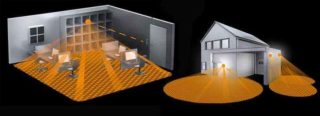
Motion detectors for security systems are used wherever it is necessary to control and restrict the movement of unauthorized persons. The need for this arises at the following facilities:
- in the entrances of residential buildings and offices of organizations;
- at guarded sites and warehouses;
- in apartments and separate rooms;
- in the entrance areas of country houses and garages.
The scope of a particular model depends on the category to which it belongs. Passive IR devices, for example, are in demand in confined spaces indoors. Active outdoor IR sensors are mostly used to protect large open spaces (prohibited areas).
A distinctive feature of ultrasonic devices is that they are preferable to use in rooms with heating, since some models do not withstand significant temperature changes. When choosing a place for installing such devices, the presence of glasses and other fragile materials that can be destroyed by resonance phenomena is taken into account.
Popular models
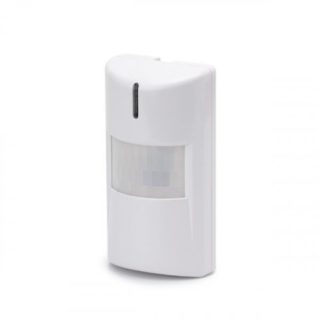
There are many different models on the domestic market that differ in their design and functionality. Products under the brand name "Guard" are in significant demand, which are distinguished by increased sensitivity and high accuracy of object positioning within the viewing sector. Thanks to the possibility of fine-tuning the IR sensor, it is possible to achieve triggering only when large objects (weighing more than 25 kg) are detected.
Among the performance characteristics of the "Guard", the following indicators stand out:
- range of up to 12 meters;
- horizontal viewing angle - at least 110 degrees;
- vertical viewing angle - 80 degrees.
The supply voltage of the device is 12 Volts (stand-alone mode from the battery).
Another popular model is the Shtora wireless and wired IR sensors, which are highly reliable and capable of operating at a distance of up to 50 meters in any weather conditions. In addition, the device in question has a wide range of settings, allowing you to select the appropriate operating mode for the serviced room or area.

